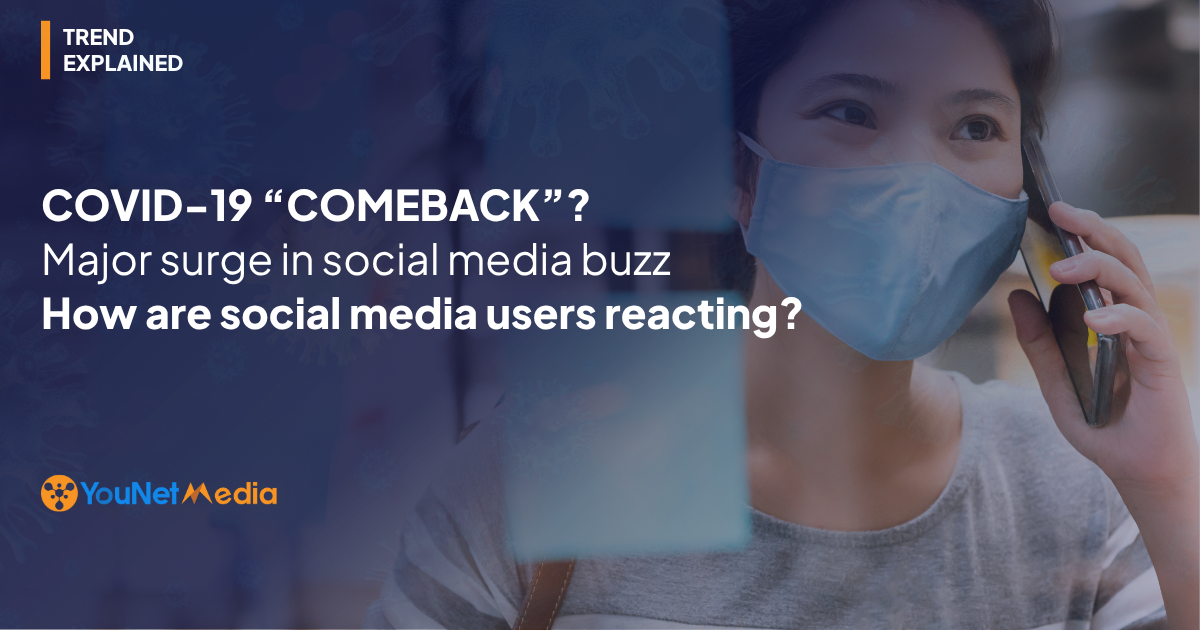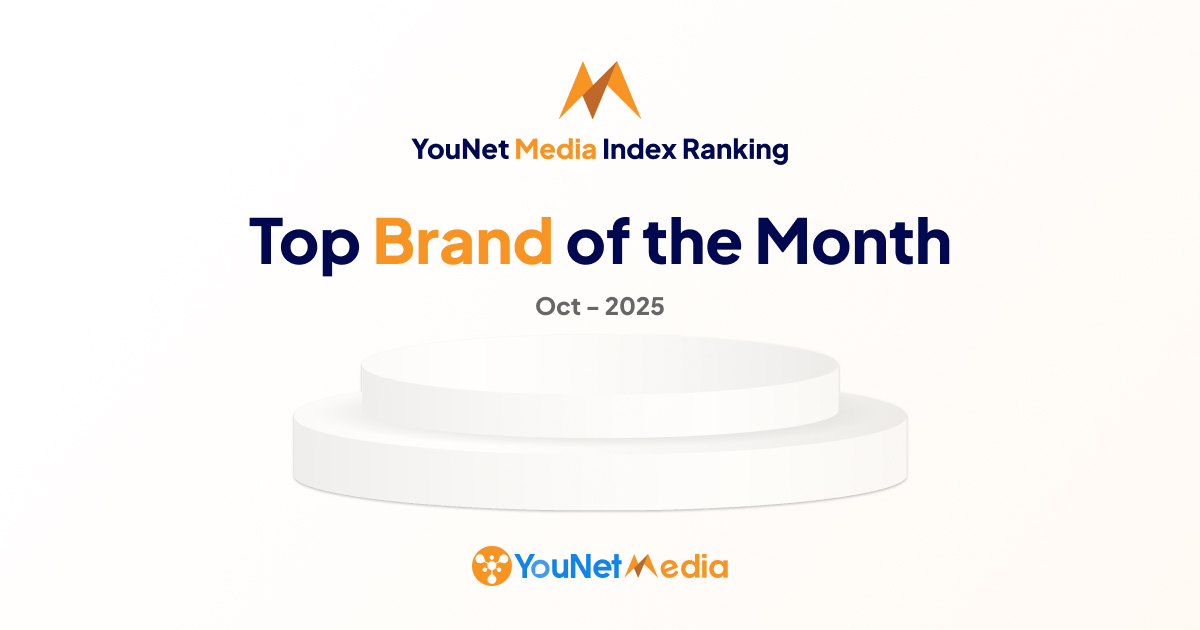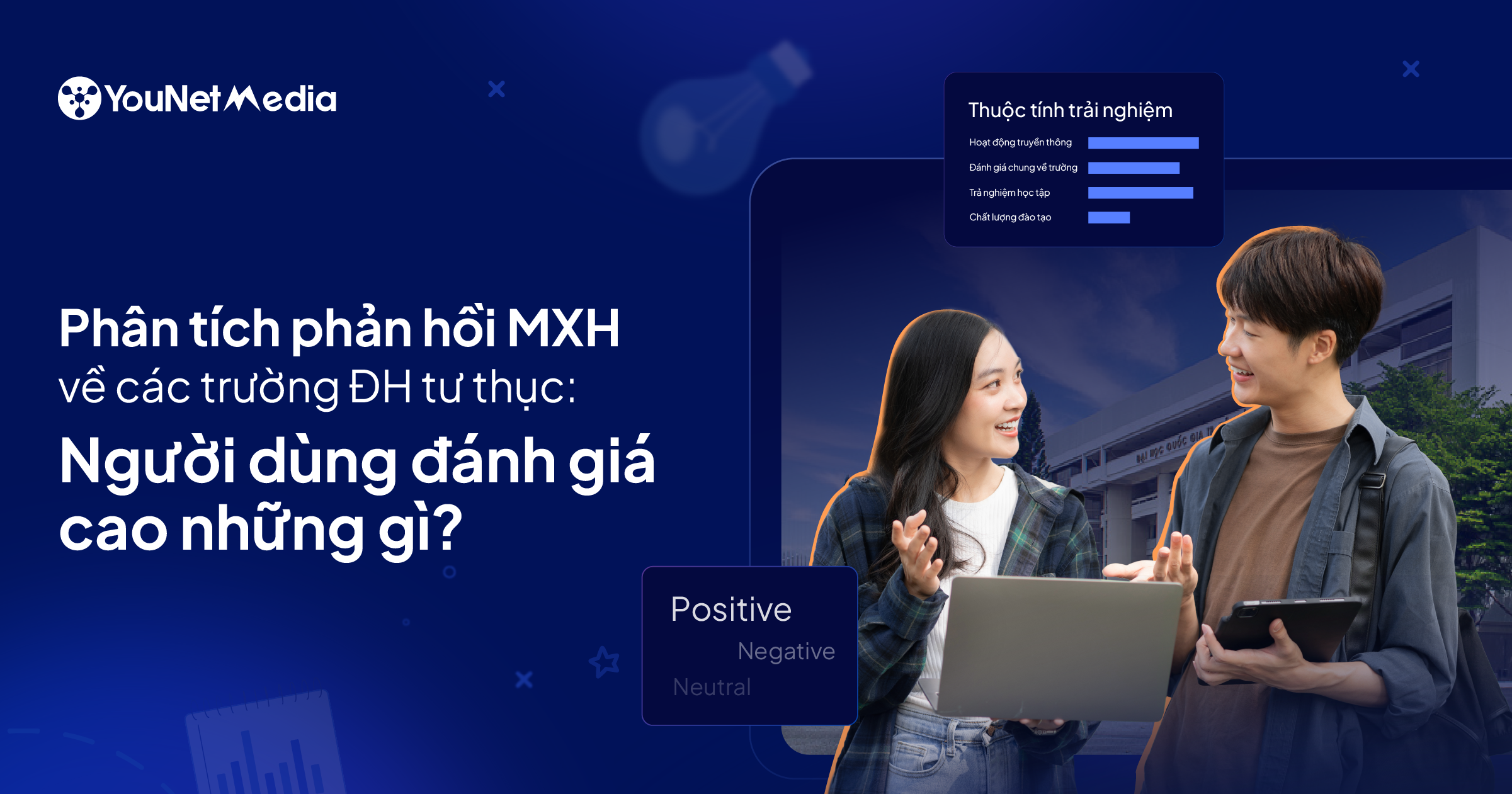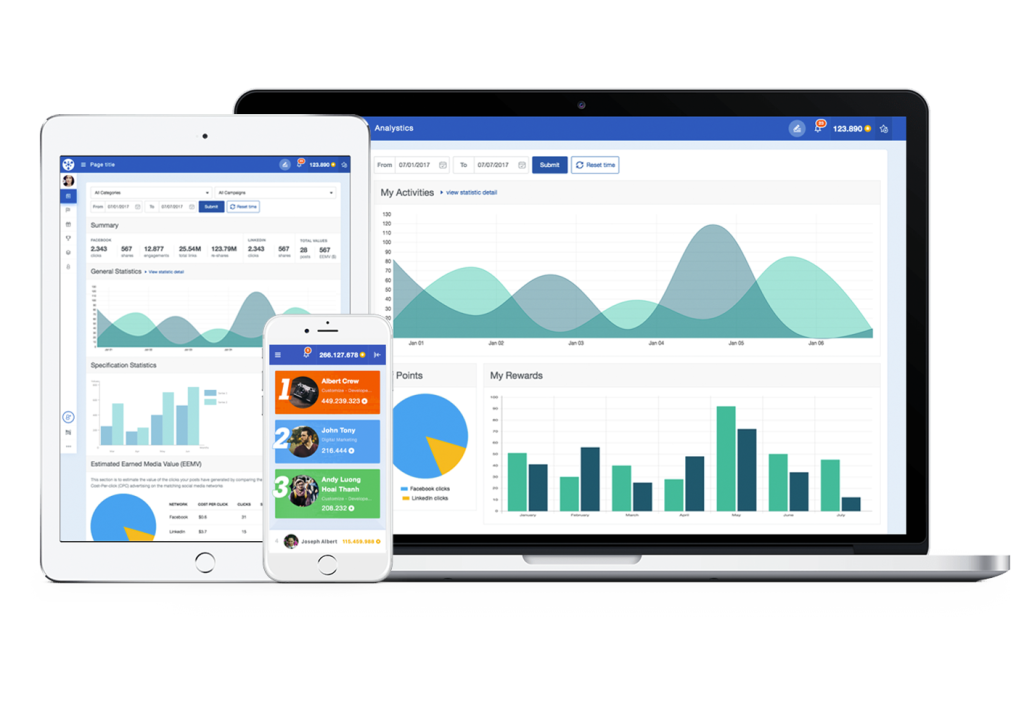COVID-19 has unexpectedly returned to the spotlight on social media, with a massive surge in online discussions. From growing public concern to preventive shopping behaviors, how are social media users reacting to the latest changes? And how quickly have brands responded to this social wave? Let’s join YouNet Media in deep-diving into the data through Social Listening to uncover the real story behind the numbers.
1. COVID-19’s comeback: What are the events that triggered the surge in social buzz?
Between May 13 and May 23, 2025, the topic of COVID-19’s return generated over 1.11M mentions on social media, emphasizing a staggering 41,67K% increase compared to the previous time frame (May 2 – 12, 2025), reflecting immense public attention.

According to SocialTrend, in just 24 hours (from 2:00 PM on May 22 to 2:00 PM on May 23), discussions of COVID-19 reached more than 267K mentions, making it the #1 trending topic in Social News.

Mentions began to rise on May 13, following reports of a COVID-19 outbreak in Thailand. The first spike occurred at 9:00 PM on May 14, with 70.483 mentions, shortly after the Ministry of Health issued official preventive guidance, recording a 266% increase from the day before.
Discussion volume remained stable between 11K and 50K mentions until the second spike on May 20 at 9:00 AM, reaching 133.044 mentions following news about the request from the Ministry of Health regarding the preparation of quarantine facilities.
The peak hit on May 23 at 9:00 AM, with 170.033 mentions, driven by news of new confirmed cases in Vietnam. Simultaneously, various government and media responses on countermeasures spread widely, turning COVID-19 into a nationwide trending topic.
These trends show that official announcements from authorities significantly amplify online conversations, proving that social media users tend to react more strongly to validated, formal information when the perceived threat is real and immediate to their actual lives.
2. Discussion hotspots: What are users concerned about?
SocialHeat data recorded a sentiment index of -0,6 for COVID-19 discussions, with 15,56K positive mentions versus 62,81K negative discussions. The dominant negative sentiment reflects collective anxiety, fear, or fatigue over the disease’s reappearance. Top 5 most concerned discussion topics includes “New infected case”, “Symptoms”, “Face mask”, “Quarantine” and “Prevention measures”.
Notably, “Face mask” stood out not just in discussion volume (9,7% share, or 107.581 mentions), but also as a reflection of real-life behavior. According to YouNet ECI, online searches and mask purchases surged in parallel with online buzz. Between May 11 – 17, 2025, face masks recorded 77,05K orders on e-commerce platforms, generating 3,3 billion VND in sales.
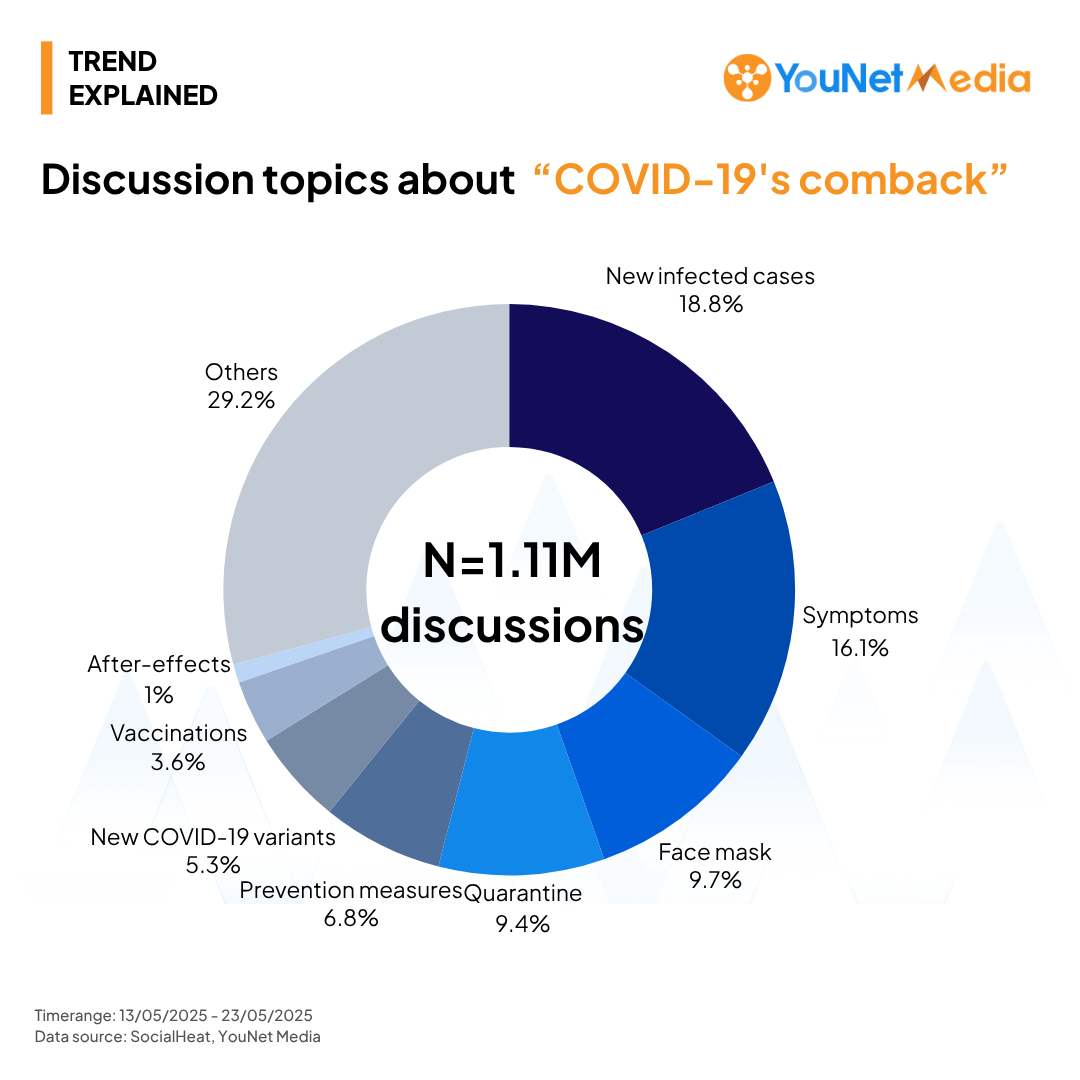
This data indicates that concern about COVID-19 quickly converted to action – particularly in increased demand for protective gear. Once again, public health remains a top concern, especially when official warnings from the government are in place.
Amid the surge in online discussions and shifts in user behavior, brands have quickly joined the conversation through various approaches, from issuing health warnings to creatively promoting public health awareness.
So, what strategies and communication are brands adopting during this period?
3. How are brands responding? 5 strategic approaches to public health messaging
In the context of heightened interest in COVID-19, brands have shifted from product promotion to emphasizing their role in protecting consumer health.
For example, Yakult and An Khang pharmacy promptly responded with infographic-style communications sharing health alerts and official recommendations from the Ministry of Health.
Pharmacity took on the role of a “mini health station” with the message “Ready to Protect You”, highlighting its stock of face masks, test kits, mouthwash, and vitamins.
Promotions were also strongly leveraged. Pharmacity and An Khang pharmacy launched up to 35% off combo deals on preventive items, supported by visually strong creatives to boost conversions.
Lifebuoy adopted a softer approach, embedding hygiene messages into everyday health practices with the theme “Stay proactively sanitized”, avoiding panic triggers while promoting cleanliness.
Chubb Life, notably, chose not to mention COVID-19 directly. Instead, it communicated a long-term message on respiratory health, which was framed as a lifestyle and wellness choice through family and nature-themed visuals. This educational angle resonated in a calm yet effective manner.
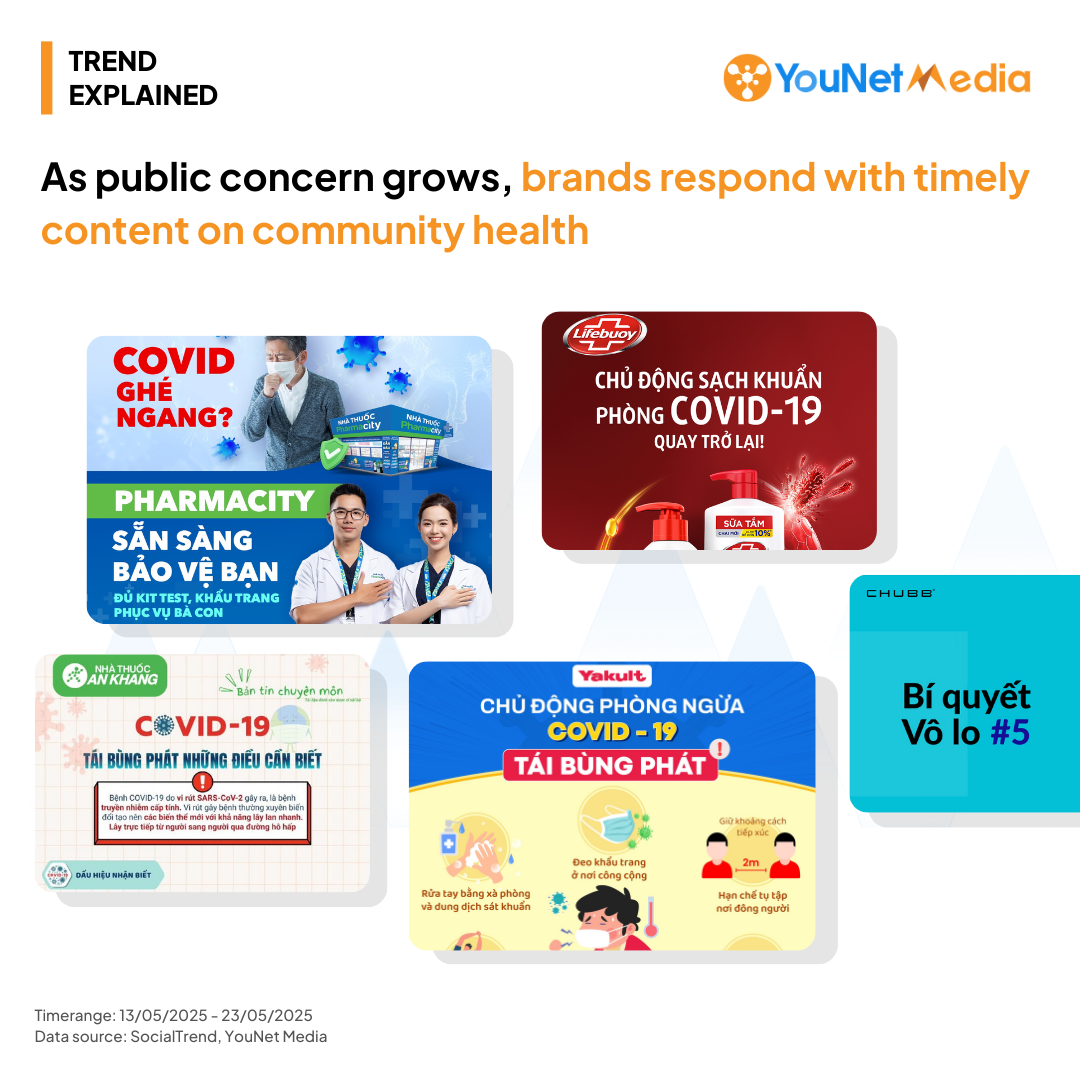
4. Conclusions
COVID-19 remains a highly sensitive topic on social media. Each official update from the competent authority can instantly ignite intense discussion and negative sentiment, reflecting public anxiety and vulnerability to health-related news.
Brands must closely monitor these sentiment shifts and respond appropriately, especially during peak periods. Proactively managing emotional responses and selecting the right messaging at the right time helps brands avoid unnecessary crises and foster meaningful engagement.
Effective communication like those of Lifebuoy, An Khang pharmacy, and Pharmacity showcases how brands can remain relevant without causing panic. These campaigns underscore the importance of data-driven strategies that align with evolving consumer emotions and behaviors.
As SocialHeat data demonstrates, every wave of public health concern brings rapid shifts in attention, sentiment, and consumer action. This presents a timely opportunity for brands to step in with valuable, contextual messaging that supports and protects their communities.
Stay updated on trending topics across industries daily with YouNet Media here.

